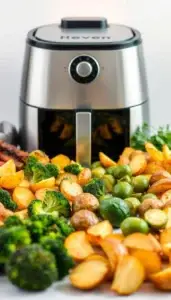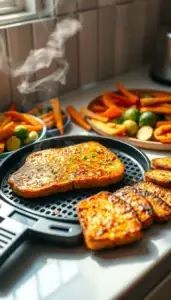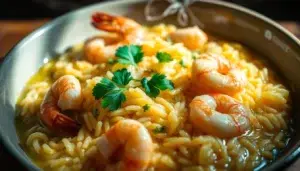There’s something special about a warm, hearty bowl of seafood chowder. It’s a classic dish loved by many, offering a rich and flavorful experience. As you explore this classic seafood chowder recipe, you’ll learn how to make a truly satisfying meal.

This recipe will teach you how to mix the freshest ingredients with traditional cooking methods. You’ll make a delicious seafood chowder that will become a favorite. It’s perfect for both seasoned chefs and culinary newcomers.
Key Takeaways
- Learn how to make a classic seafood chowder from scratch
- Discover the key ingredients that make this dish so flavorful
- Explore variations of the recipe to suit your taste preferences
- Understand the importance of using fresh ingredients
- Get tips on how to serve and enjoy your seafood chowder
The Rich History of Seafood Chowder
Seafood chowder has been a comforting classic for generations. Its roots go back to the early days of coastal settlements. This hearty dish has warmed and nourished those by the sea for years.
Origins of Chowder in Coastal Communities
The history of seafood chowder is tied to coastal communities, like New England. The first chowders were simple. They used fish, potatoes, and onions, cooked over an open flame.
Evolution of Seafood Chowder Through the Centuries
Seafood chowder evolved over time, influenced by many cultures. It was adapted and changed by different communities. This led to unique regional styles, like creamy clam chowder in New England.
Today, seafood chowder has many variations. These reflect local tastes and ingredients. Knowing its history makes us appreciate this comforting dish even more.
Essential Ingredients for the Best Seafood Chowder Recipe
To make a memorable seafood chowder, start with the basics. A top-notch homemade seafood chowder depends on quality and variety of ingredients.
Fresh Seafood Selection
The seafood is the main attraction. For a delicious chowder, mix fish and shellfish.
Types of Fish to Use
Go for firm-fleshed fish like cod or haddock. They cook well and offer a nice texture.
Shellfish Options
Clams, mussels, and shrimp are great picks. They bring different textures and tastes, making your chowder more exciting.
Base Ingredients
The base of your chowder is key. It includes dairy and vegetables.
Dairy Components
Heavy cream or whole milk adds richness. Butter boosts flavor. For a lighter chowder, adjust the dairy.
Vegetables and Aromatics
Onions, garlic, and potatoes are must-haves. They add depth and body. Bacon adds a smoky taste.
Herbs and Seasonings
The right herbs and seasonings make your chowder special. Thyme, bay leaves, and parsley are classic choices that go well with seafood.
Here’s a summary of the essential ingredients in a table format:
| Ingredient Category | Specific Ingredients |
|---|---|
| Fresh Seafood | Cod, Haddock, Clams, Mussels, Shrimp |
| Base Ingredients | Onions, Garlic, Potatoes, Bacon |
| Dairy Components | Heavy Cream, Whole Milk, Butter |
| Herbs and Seasonings | Thyme, Bay Leaves, Parsley |

Equipment and Preparation
Before you start cooking your easy seafood chowder, it’s important to have the right tools and preparation. This makes your cooking smooth and fun.
Essential Kitchen Tools
To make a delicious seafood chowder, you’ll need some basic kitchen tools. You’ll need a large pot, like a Dutch oven, for cooking. Also, a cutting board and sharp knife for chopping vegetables and seafood.
Having a measuring cup and spoons is also key. They help you get the flavors just right.

Preparing Your Seafood
Preparing your seafood is a key step in making a great chowder. Clean and chop your seafood into small pieces. If it’s frozen, thaw it first as the package says.
Prepping Vegetables
Chopping your vegetables is the next step. You’ll need to chop onions, potatoes, and other veggies. Make sure they’re all chopped the same size so they cook evenly.
This helps your chowder have a consistent texture.
Step-by-Step Cooking Instructions
To make a great seafood chowder, follow these steps. They ensure a rich, creamy, and satisfying dish. Start by building a flavorful base, then add ingredients carefully, and season to perfection.
Step 1: Creating the Flavor Base with Bacon
Begin by cooking diced bacon in a large pot over medium heat. This step is key for the chowder’s flavor. Cook the bacon until crispy, then remove it, leaving the grease. The smoky bacon flavor will make your creamy seafood soup taste amazing.
After removing the bacon, you’ll have a pot of flavorful grease. Use this grease to sauté the vegetables, adding depth to your chowder.
Step 2: Sautéing Vegetables
Add diced onions, celery, and other vegetables to the pot with the bacon grease. Sauté them until they’re softened and fragrant, about 5-7 minutes. This step is vital for the chowder’s flavor base.
Step 3: Adding Liquids and Potatoes
After sautéing the vegetables, add potatoes, clam juice, and broth. Bring to a boil, then simmer until the potatoes are tender. This step is key for the right consistency in your chowder.
Step 4: Incorporating Seafood
Once the potatoes are cooked, add the seafood. Start with firmer seafood like clams or mussels, then add more delicate options like fish or shrimp. This ensures all seafood is cooked perfectly without overcooking.
Step 5: Final Seasoning and Thickening
The last step is seasoning with salt, pepper, and herbs or spices. To make it creamy, mix in milk or cream with flour or cornstarch. Stir well and simmer until it thickens. This will give you a rich and satisfying seafood chowder that everyone will love.
Troubleshooting Common Chowder Problems
Even with a great seafood chowder recipe, you might face some common issues. These can include a chowder that’s too thin, dairy that curdles, flavors that don’t balance, and seafood that’s overcooked. But don’t worry, there are simple fixes to these problems. With a few tweaks, you can make your chowder creamy and delicious.
Fixing a Too-Thin Chowder
If your chowder is too thin, you can thicken it. Try adding a slurry of flour and water or simmer it uncovered to reduce the liquid. You can also add more potatoes or puree some of the chowder to thicken it.
Preventing Curdled Dairy
To avoid curdled dairy, don’t boil the chowder after adding milk or cream. Instead, warm the dairy separately. Then, slowly add it to the chowder while stirring constantly.
| Issue | Solution |
|---|---|
| Too-thin consistency | Add a flour slurry or simmer to reduce liquid |
| Curdled dairy | Heat dairy separately and stir constantly when adding |
| Imbalanced flavors | Adjust seasoning and acidity |
| Overcooked seafood | Add seafood towards the end of cooking time |
Balancing Flavors
To balance your chowder’s flavors, adjust the seasoning. If it’s too salty, add more cream or potatoes. If it’s too bland, add herbs or a squeeze of lemon juice.
Avoiding Overcooked Seafood
To keep seafood tender, add it towards the end of cooking. This way, it stays flavorful and not overcooked.
Variations and Customizations
Seafood chowder is a versatile dish that can be tailored to suit various regional and personal preferences. You can experiment with different ingredients and cooking methods to create your own unique version of this comforting classic.
New England vs. Manhattan Style
The debate between New England clam chowder and Manhattan clam chowder is well-known. The former is creamy and mild, while the latter is tomato-based and spicier. You can choose to make your seafood chowder in either style or blend elements of both to create something new.
As Julia Child once said, “The only time to eat diet food is while you’re waiting for the steak to cook.” You can indulge in the rich flavors of a traditional New England-style chowder or opt for a lighter Manhattan-style version.
Dairy-Free Alternatives
For those with dairy intolerance, there are several alternatives to traditional cream and milk. You can use coconut milk or almond milk to achieve a similar creamy texture without the dairy.
Gluten-Free Thickening Methods
To make your seafood chowder gluten-free, you can use gluten-free flour or cornstarch as thickening agents. These alternatives can help you achieve the desired consistency without compromising on flavor.
Spicy Seafood Chowder Variations
If you like a bit of heat in your chowder, you can add diced jalapenos or red pepper flakes to give it a spicy kick.
Budget-Friendly Adaptations
To make seafood chowder more budget-friendly, you can use affordable seafood options like cod or tilapia, and supplement with vegetables and potatoes.
Conclusion
You now have the tools to make a delicious seafood chowder. It’s sure to become a family favorite. Just follow the steps in this article for a rich and flavorful chowder.
This easy seafood chowder recipe is flexible. You can try different variations for any occasion. Whether you want a traditional New England-style or a spicy twist, you can do it.
With simple ingredients and basic kitchen tools, you can make a mouth-watering seafood chowder. So, get creative and make this classic recipe your own.
FAQ
What is the best type of seafood to use in a seafood chowder recipe?
How do I make a creamy clam chowder without it curdling?
Can I make a homemade seafood chowder without using bacon?
What is the difference between New England clam chowder and Manhattan-style seafood chowder?
How can I thicken my seafood chowder if it’s too thin?
Is it possible to make a delicious seafood chowder that’s gluten-free?
Can I make a seafood chowder with bacon that’s also dairy-free?
How do I avoid overcooking the seafood in my chowder?
There are no reviews yet. Be the first one to write one.



